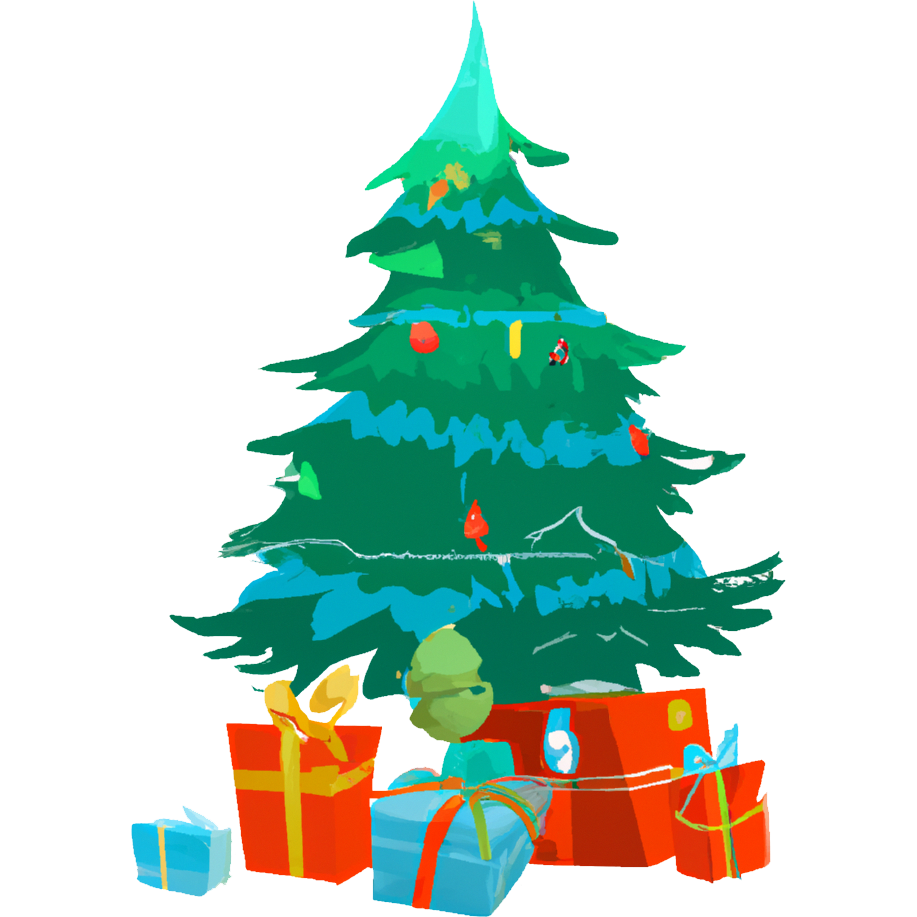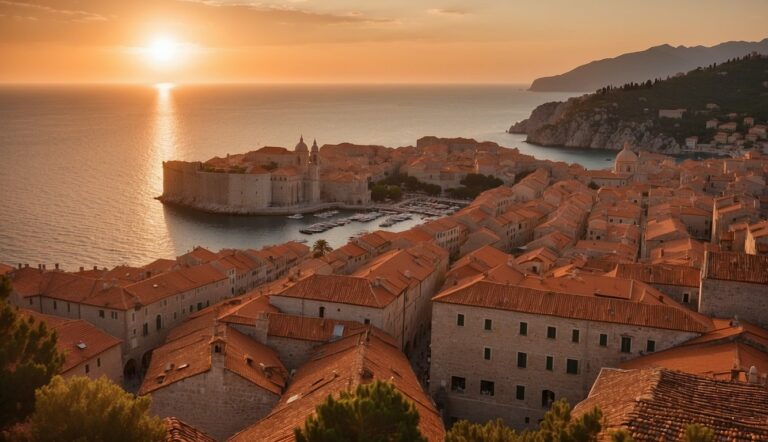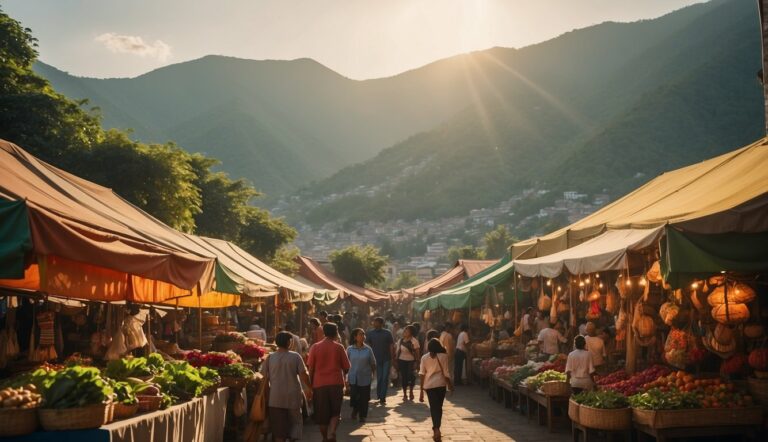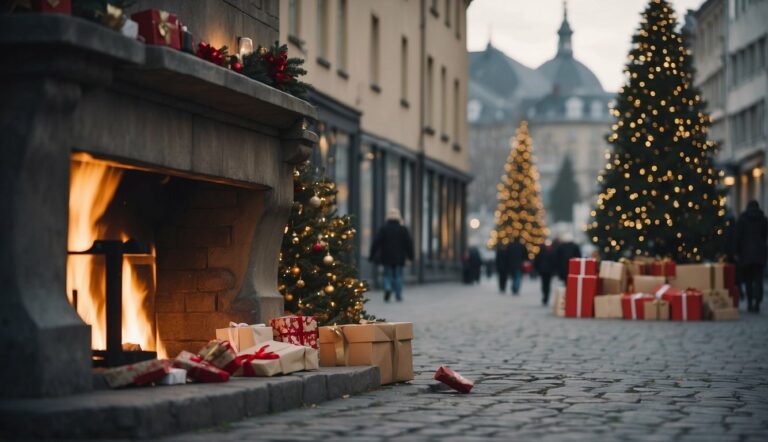Experience Christmas in Finland: The Home of Santa Claus
Christmas in Finland is a deeply cherished season, celebrated with a blend of age-old traditions and contemporary practices.
Finns turn to family gatherings, special foods, and community festivities as the festive season approaches.
The Finnish Christmas spirit is infused with the essence of ‘Hygge,’ a concept of cosiness and warmth, which is particularly appealing during the cold, dark winter months.
Homes are adorned with lights and decorations, creating a welcoming atmosphere that combats the seasonal darkness.
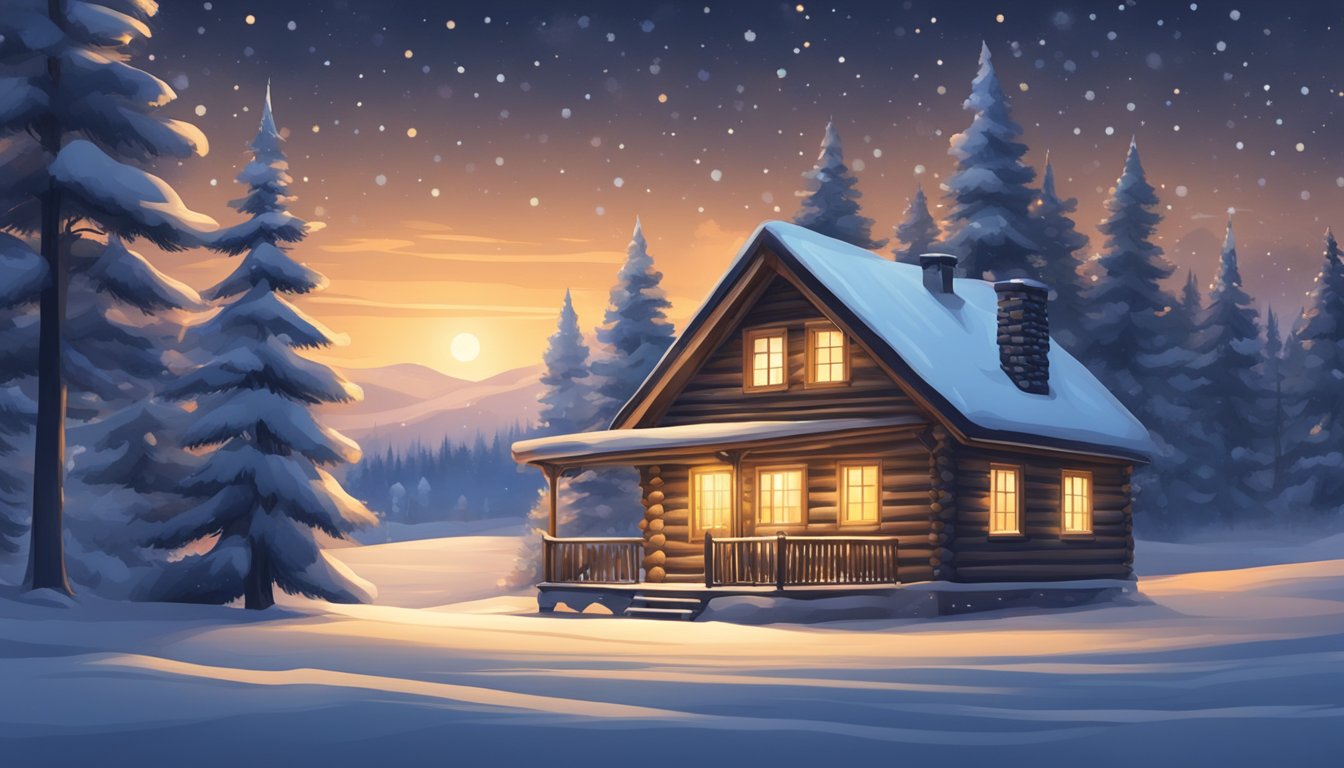
A centrepiece of the Finnish Christmas tradition is the role of Joulupukki, the Finnish Santa Claus, believed to originate from the northern part of the country in Lapland. This figure is central to the celebrations, embodying the spirit of giving and joy.
Families eagerly prepare for his visit, ensuring the sauna is warm, and the home is filled with the fragrant aromas of freshly baked goods.
On Christmas Eve, Joulupukki travels, delivering gifts and spreading cheer. At the same time, Finns savour a festive meal that often includes specialities such as ham, fish, casserole dishes, and the spiced bread known as ‘joulupulla.’
The backdrop for this celebration is the stunning Finnish landscape, often blanketed in snow, offering a picturesque setting for Christmas.
Some venture out to partake in activities like skiing or ice skating, while others prefer the warmth of indoor celebrations.
This interplay of tradition, nature, and communal warmth makes Christmas in Finland a unique and enchanting experience steeped in customs passed down through generations.
The Significance of Joulu
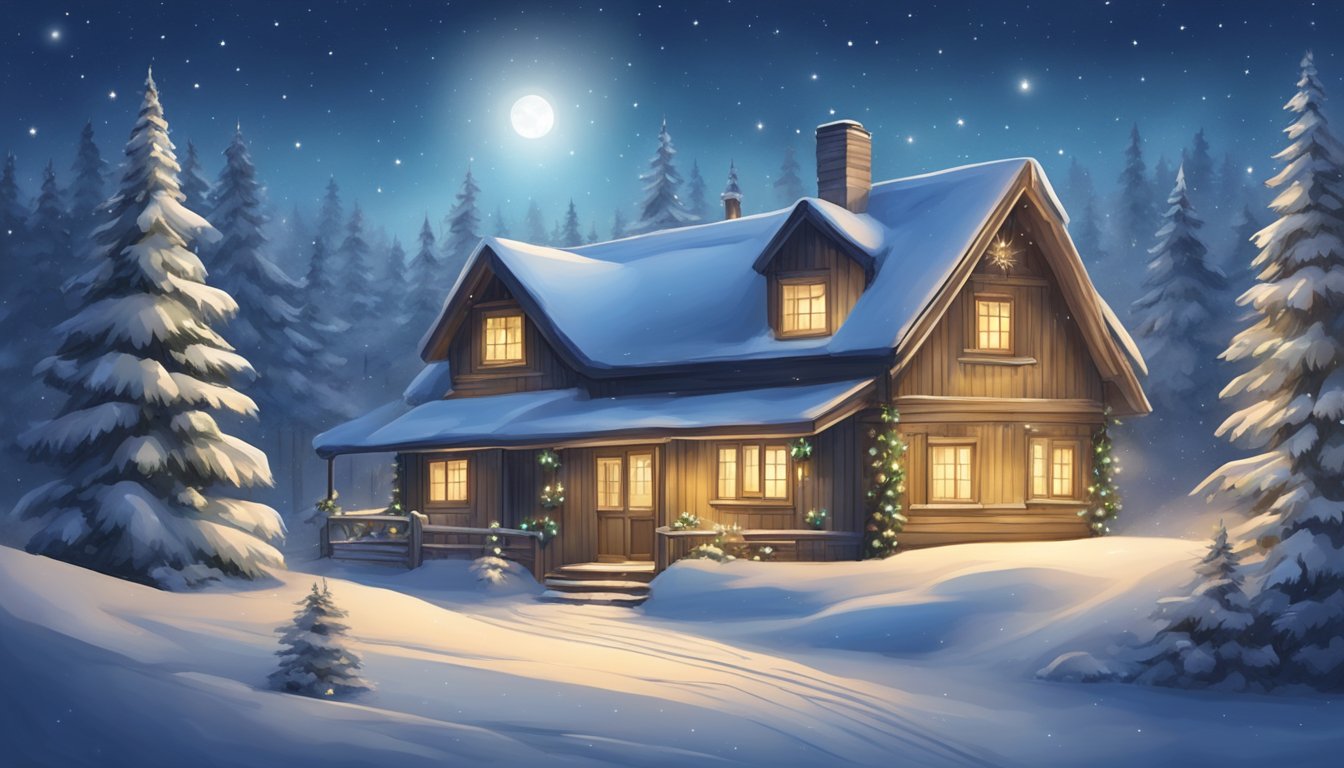
Joulu, Finland’s Christmas celebration, interweaves the nation’s Christian heritage with ancient Finnish traditions, marking a time of festive gathering and cultural reflection.
Origins and History
Joulu has its roots in both the Christian celebration of the birth of Christ and the Finnish pre-Christian festival of Kekri. Once a commemoration of harvest and remembrance of the dead, Kekri transitioned into the Christian tradition following the spread of Christianity to Finland during the Middle Ages.
The name “Joulu” likely predates Christian influence, stemming from a pagan midwinter celebration.
Festive Vocabulary
- Joulu: Refers to Christmas in Finnish.
- Joulukuu: Meaning “Christmas month,” it denotes December.
- Jouluaatto: Christmas Eve, considered the start of Joulu.
- Joulupukki: The Finnish version of Santa Claus.
Christianity and Finnish Tradition
Joulu merges Christian and Finnish customs fluidly. The Christian influence is evident in the observance of December 25th as the birth of Christ, while Finnish tradition heavily impacts the celebration’s character.
For instance, Christmas Eve, or Jouluaatto, holds greater significance than Christmas Day in Finland, reflecting pre-Christian seasonal customs when the nights were the longest and the return of light was celebrated.
Finnish Roots and Global Influence
Finland’s Joulu has contributed to global Christmas culture through the figure of Joulupukki, Finland’s Santa Claus. This character evolved from frightening Yule spirits demanding offerings into a benevolent gift-bringer akin to the modern Santa Claus.
Finnish immigrants and cultural exchanges have shared these Yuletide traditions worldwide, embedding Finnish cultural elements into the tapestry of global Christmas celebrations.
Pre-Christmas Preparations
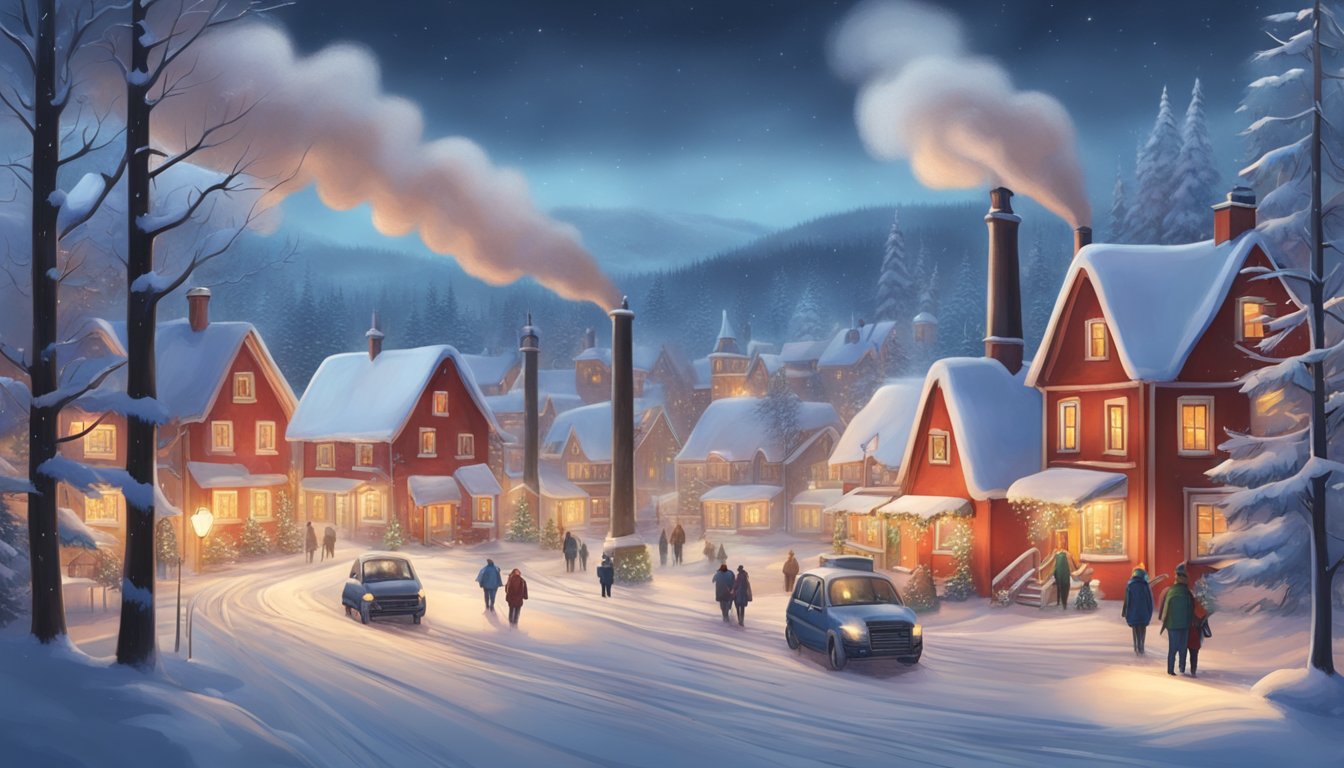
In Finland, the anticipation of Christmas is marked by distinctive traditions and customs that commence with the Advent period and extend throughout December.
Advent Celebrations
The Advent season sets the tone for holiday preparations in Finland. It begins four Sundays before Christmas Day and is characterized by the lighting of Advent candles.
A candle is lit each week, symbolising Christmas’s progressive anticipation. During this period, families also attend church services and engage in charitable work.
Pikkujoulu Parties
Pikkujoulu, translating to “Little Christmas,” is a popular Finnish tradition involving pre-Christmas celebrations.
These festivities typically take place at workplaces, organizations, and among friends from late November leading up to Christmas.
Pikkujoulu parties are known for their jovial atmosphere, with food, drink, and often dancing or singing.
Christmas Calendars
Advent calendars are a quintessential part of the Finnish Christmas tradition. They typically begin on December 1st, providing a daily treat or surprise leading up to Christmas Eve.
These calendars serve as a countdown and add a sense of excitement and joy for children and adults alike.
Home and Family Traditions
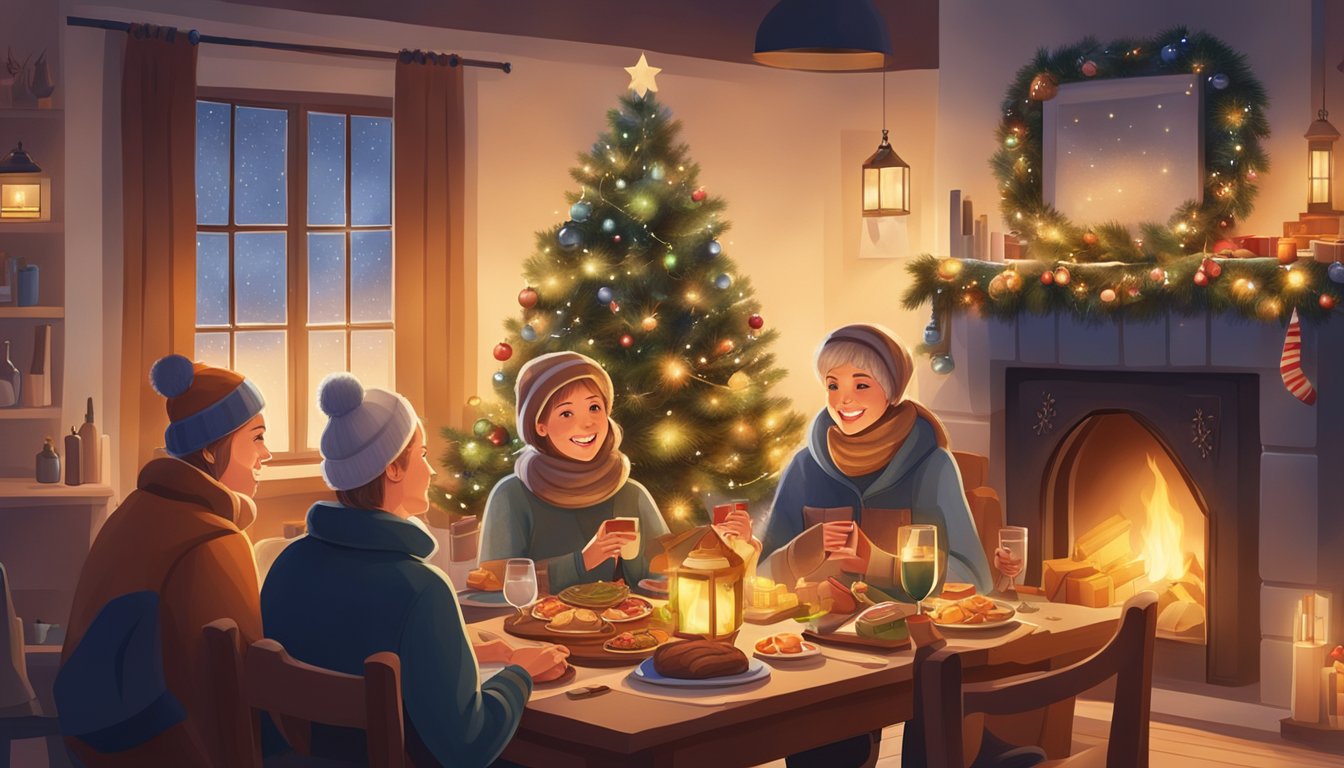
In Finnish homes, the Yuletide season is a blend of cherished rituals and family-centric traditions that hold a special place in the hearts of its people.
Christmas Eve Rituals
In Finland, Christmas Eve is the pinnacle of holiday celebrations.
Families often start the day by enjoying a festive breakfast that includes eating rice porridge. Hiding an almond within the porridge is a tradition believed to bring good luck to the person who finds it.
The day continues with the anticipation of decorating the Christmas tree, which often remains the home’s centrepiece during the festive period.
Sauna and Its Significance
The Finnish sauna is an integral part of Christmas Eve, with many households observing the ritual of a peaceful sauna session in the evening.
This tradition is a nod to Finnish heritage, serving as a moment of relaxation and purification before the night’s events. It is a cherished practice that embodies family togetherness and the spirit of Christmas.
Family Gatherings and Santa’s Visit
The home becomes a gathering place for families, where they settle in for an intimate Christmas dinner.
As night falls, children eagerly await the arrival of Santa Claus, or ‘Joulupukki’ as he is known in Finland.
This is a magical moment, particularly for the younger family members, and Santa’s visit underscores the joy and wonder of the season.
Santa commonly brings gifts and good cheer, reinforcing the warmth of familial bonds during the Christmas celebrations.
Festive Foods and Feasts
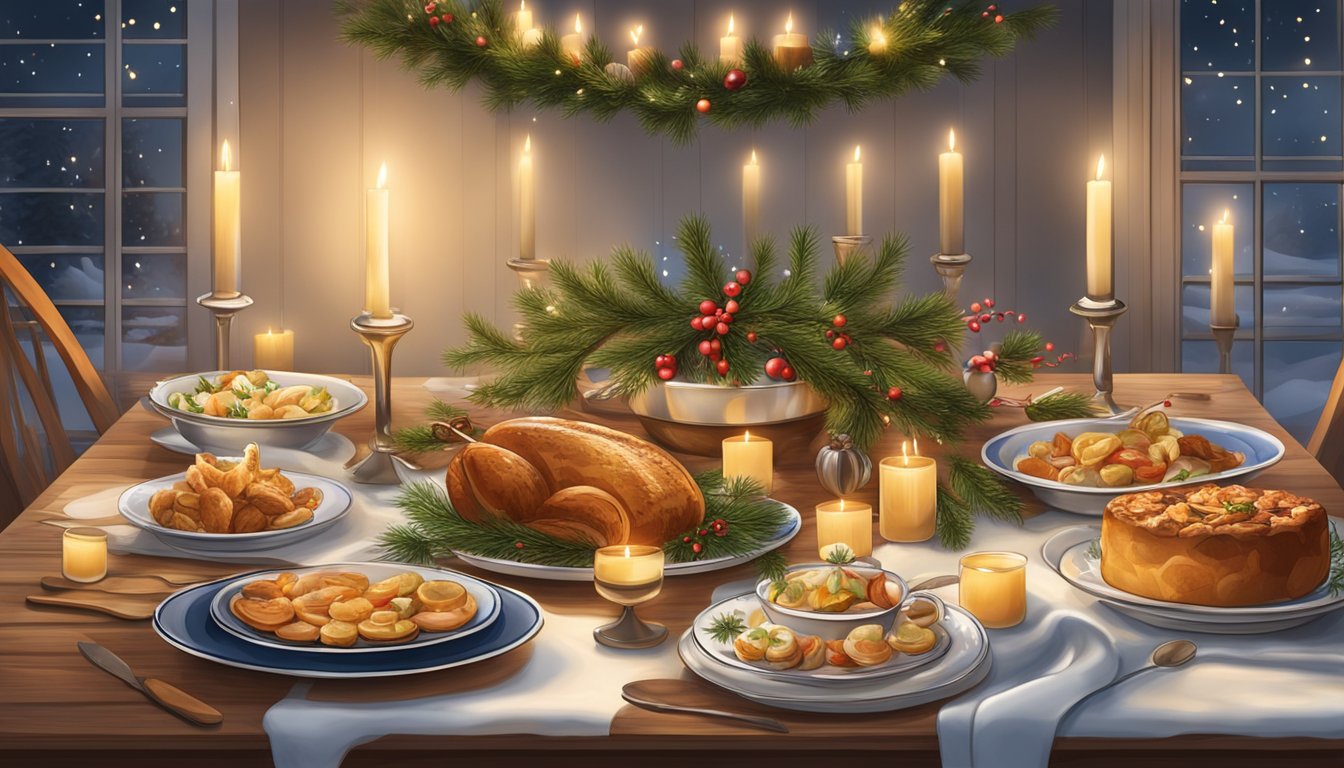
In Finland, Christmas celebrations are rich with culinary traditions that feature an array of festive dishes, each boasting flavours unique to the holiday.
Christmas Eve Dinner
On Christmas Eve, Finnish families traditionally gather for the main Christmas meal.
The hero of the meal is usually a baked Christmas ham coated with mustard and breadcrumbs for a golden crust.
This main dish is often accompanied by an assortment of casseroles, including those made with carrot and rutabaga.
Rice pudding, sprinkled with cinnamon and raisins, is a special treat with one almond hidden inside; finding it is believed to bring good luck.
Traditional Christmas Dishes
Traditional Finnish Christmas foods are rooted in simplicity and comfort.
Side dishes feature cured salmon gravlax, which is thinly sliced and served with mustard sauce.
Beetroot salad, known as rosolli, is a colourful addition to the Christmas table. It offers a sweet and sour combination of pickled beets and other diced root vegetables.
Various types of fish, a staple in Finnish cuisine, are mixed among these offerings, presented in forms ranging from pickled to smoked.
The Christmas Day Meal
On Christmas Day, Finnish families continue the festivities with a less formal meal, which often includes leftovers from the previous evening’s feast.
In addition to ham and casseroles, lighter fare such as fish makes a re-appearance, often enjoyed in a more casual setting.
Tucking into Christmas foods in a relaxed atmosphere allows for extended merriment and a time to enjoy the company of loved ones.
Public Celebrations and Activities
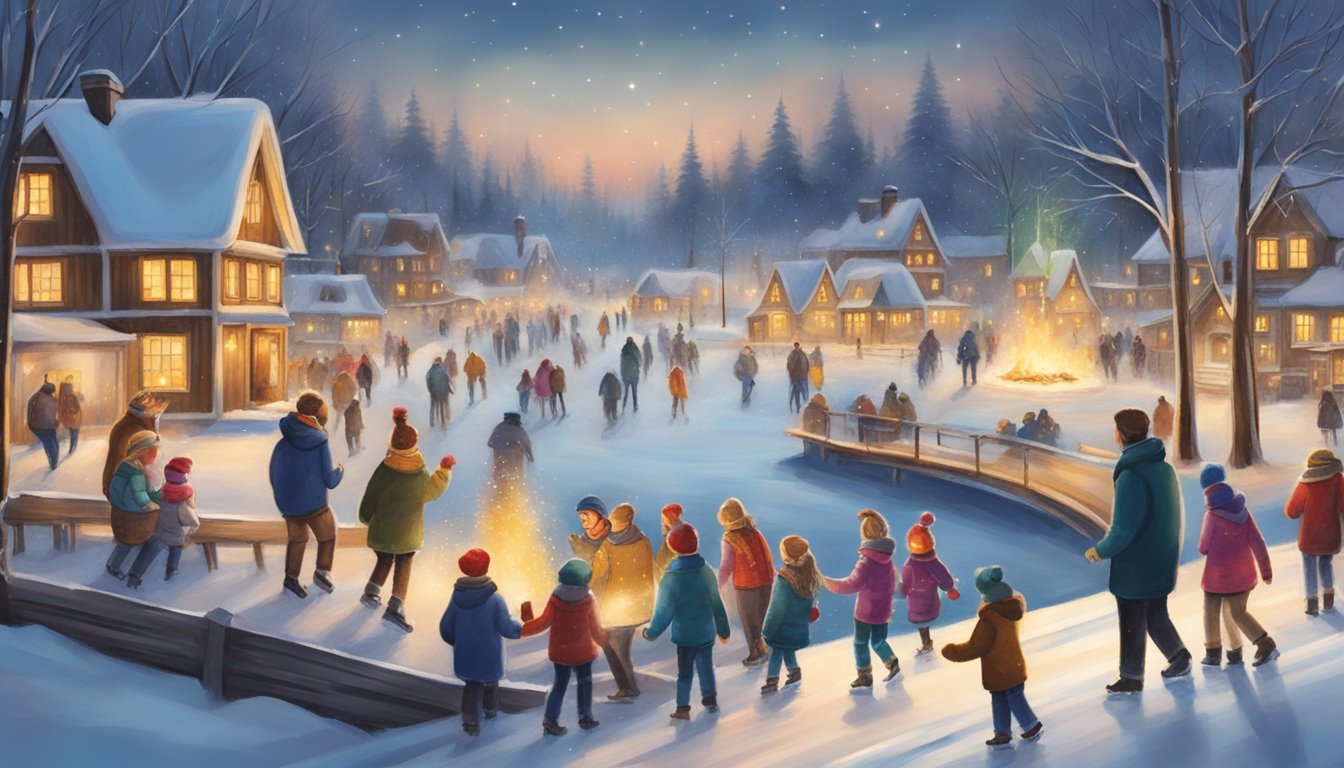
During the festive season, Finland transforms into a winter wonderland, with elaborate public celebrations, various outdoor activities, and heartwarming church services that highlight the essence of Christmas.
Christmas Markets and Shopping
Finland’s Christmas markets are an essential part of the holiday season.
Helsinki and Turku are known for their bustling markets that offer handicrafts, seasonal treats, and festive decorations. Visitors can explore:
The Helsinki Christmas Market is the oldest and most popular market, where a range of Finnish delicacies and design products are sold.
The Turku Christmas Market hosts a market full of local crafts and foods, set against the backdrop of the medieval Turku Cathedral.
Winter Sports and Outdoor Fun
The snowy landscape of Finland is perfect for skiing and skating, among other winter sports.
In addition to these, the chance to witness the Northern Lights adds a magical touch to the outdoor activities.
Numerous ski resorts operate across Finland and are suitable for cross-country and downhill skiing enthusiasts.
Ice rinks are commonly set up in public areas, with locales like the Railway Square in Helsinki being a favourite.
Those venturing to northern Finland can experience the awe-inspiring phenomenon, best viewed in the dark winter months.
Christmas Services and Carols
Finnish Christmas is not complete without the spiritual ambience of church services and the joyous singing of Christmas carols.
Many attend services in churches like the Helsinki Cathedral, where the Christmas story is celebrated.
From street corners to concert halls, carols are sung throughout the season, creating a merry atmosphere.
Yuletide Symbols and Decor
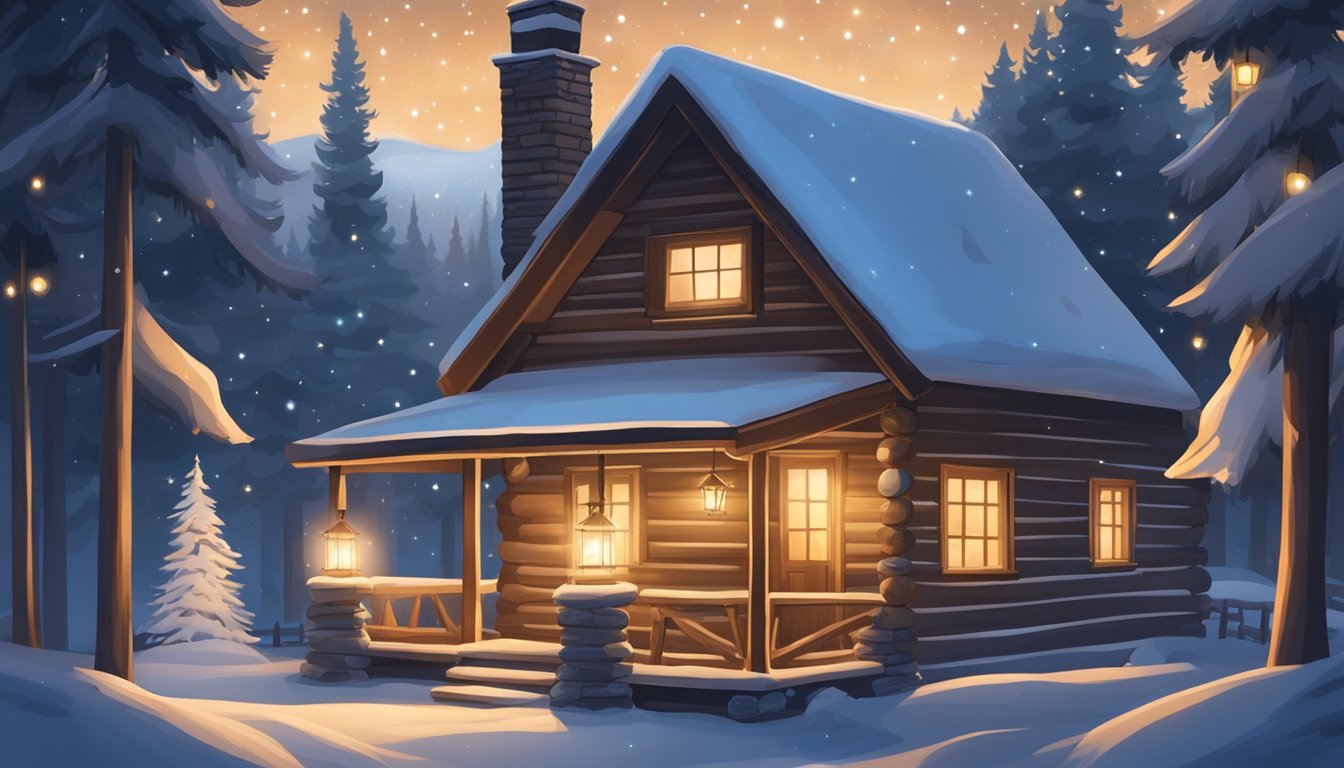
The celebration of Christmas in Finland is rich with traditional symbols and decorations that embody the spirit of the season.
Christmas Trees and Ornaments
Finnish Christmas trees, or joulukuusi, stand as a central yuletide symbol in many homes.
Typically, a Christmas Tree is erected and decorated with a range of ornaments, including handmade crafts and twinkling lights.
The tradition of bringing in and adorning a tree closely ties to the Nordic love for nature and the anticipation of Christmas.
Himmeli and Other Traditional Decor
Himmeli, geometric structures made from straws, are a distinctive Finnish Christmas decoration dating back to pagan times.
These intricate designs hang above dining tables as a charm to ensure a good harvest.
Traditionally made from natural straws, it is now crafted from modern materials.
is placed in a central spot in the home, symbolizing importance and tradition.
Lighting and Ice Lanterns
Lighting plays a crucial role in Finnish Christmas decor to counteract the polar nights.
Candles and strings of lights are ubiquitous, bringing warmth and light into the home.
Ice Lanterns, known as jäälyhty, are made by freezing water in a bucket and placing a candle inside the hollow ice.
Glögi, while not a decor, the warm spiced drink, Glögi, is a staple at gatherings, often enjoyed under the soft glow of Christmas lighting.
Cultural Significance of Santa Claus
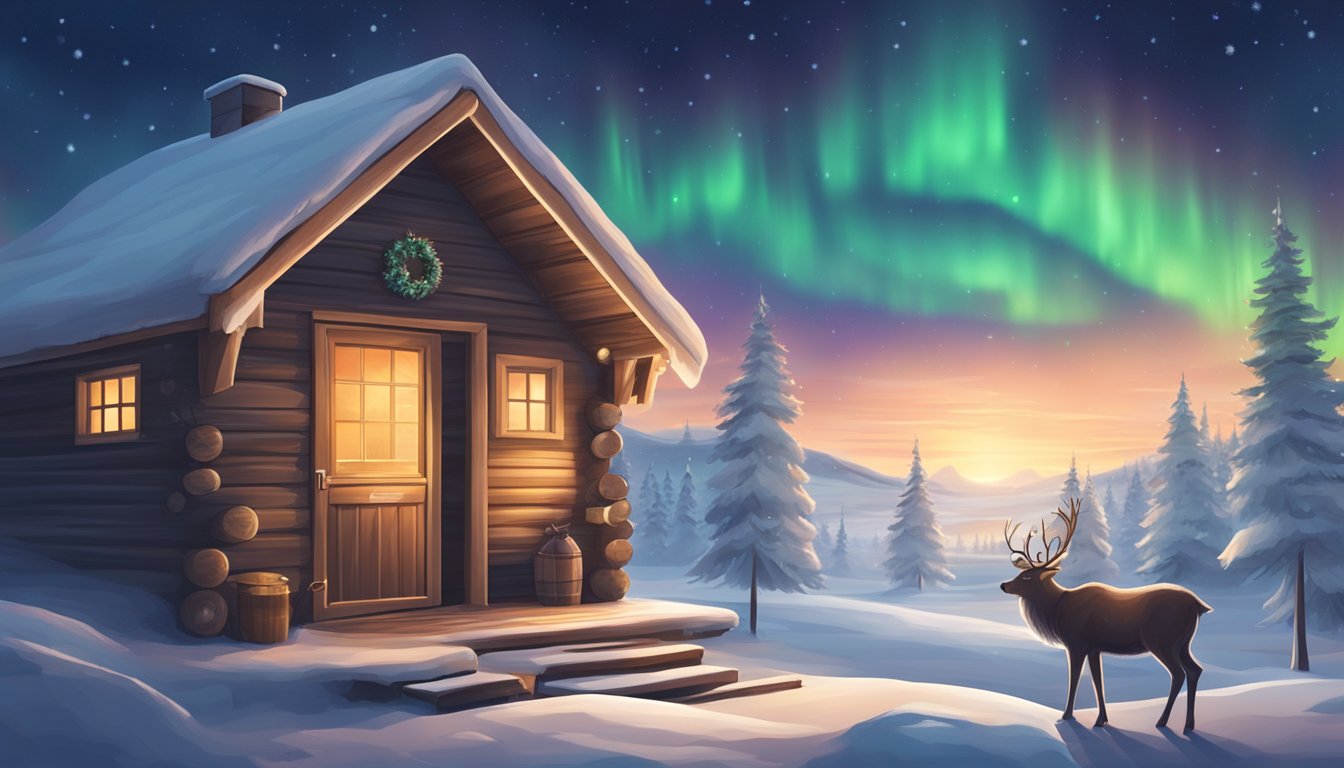
In Finland, Santa Claus is more than a holiday figure; he represents a deep-rooted element of Finnish Christmas tradition known as “Joulupukki” and has an internationally recognized persona centred around Korvatunturi and Rovaniemi.
Finnish Joulupukki and Korvatunturi
Joulupukki is the Finnish name for Santa Claus, translating to “Christmas Goat.”
This term is a nod to old pagan traditions, where men would dress as goats called Nuuttipukki after Christmas, symbolizing fertility, and go door to door asking for festive leftovers.
Over the years, Joulupukki evolved from a scary character who asked for offerings to the benevolent gift-giver akin to Father Christmas.
It is believed that Korvatunturi, located in Lapland near the Arctic Circle, is the home of Joulupukki.
This belief stems from Korvatunturi’s unique ear-like shape, suggesting that Santa can hear the wishes of children all around the world.
Santa’s Global Persona
From Rovaniemi, the official town labeled as Santa Claus’ residing place, the figure of Finnish Santa has gained a global scale as a symbol of festive joy and benevolence.
His persona was popularized in the 20th century by advertisements, notably the paintings by Haddon Sundblom for Coca-Cola ads, enhancing his image with a red coat and joyful demeanour.
The city of Rovaniemi markets itself as the gate to Santa’s home, offering a magical experience for visitors, especially families who can engage in holiday traditions such as visiting Santa’s village and meeting reindeer.
Santa’s Post Office in Rovaniemi has become a charming aspect of the Northern Christmas, receiving letters from children in nearly 200 countries, emphasizing his cultural impact and the Finnish role in maintaining the whimsy of Santa’s story.
Christmas Day and Beyond
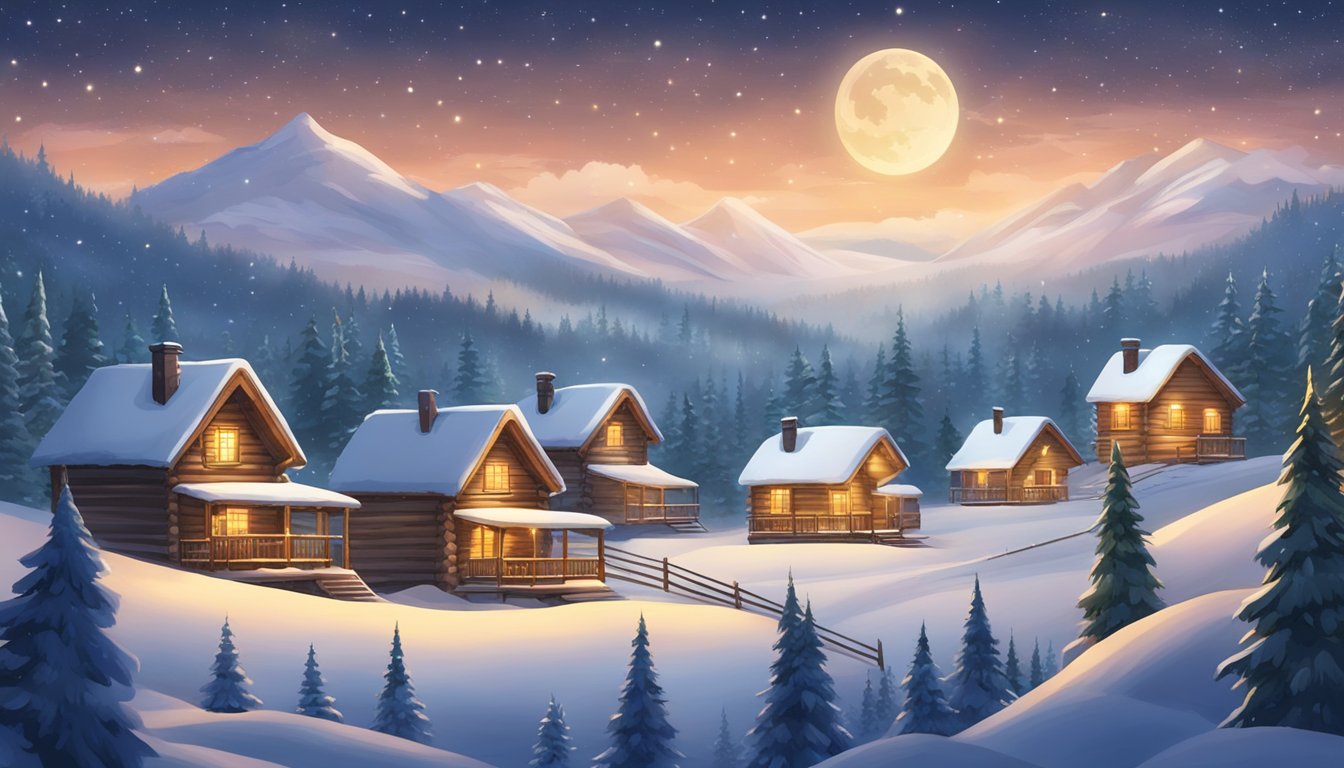
After the anticipation and festivity of Christmas Eve in Finland, Christmas Day ushers in a quieter phase of the holiday season, leading up to the traditional closure of festivities with Epiphany.
Relaxing Christmas Day Routines
Christmas Day in Finland is generally a time of tranquillity and rest.
Families often enjoy a leisurely day following the excitement of Christmas Eve.
Many choose to spend the day at home, revelling in the company of loved ones and partaking in a festive meal, often of leftovers from the day before.
Some Finns attend church services, but for the most part, the day is marked by relaxation and the enjoyment of Christmas gifts and decorations.
Epiphany and the End of the Season
Epiphany, known as “loppiainen” in Finland, signifies the end of the Christmas season and is traditionally observed on January 6th.
This day commemorates the visit of the Magi to the baby Jesus and involves various customs, such as special church services.
The removal of Christmas decorations signals the season’s conclusion.
Jul, or Yule, an archaic term for the holiday period, officially ends with Epiphany, concluding the Finnish Christmas season.
The time between Christmas Day and Epiphany is often used to visit friends and extended family, exchange greetings for the New Year and savour the remaining moments of the festive season.
Frequently Asked Questions
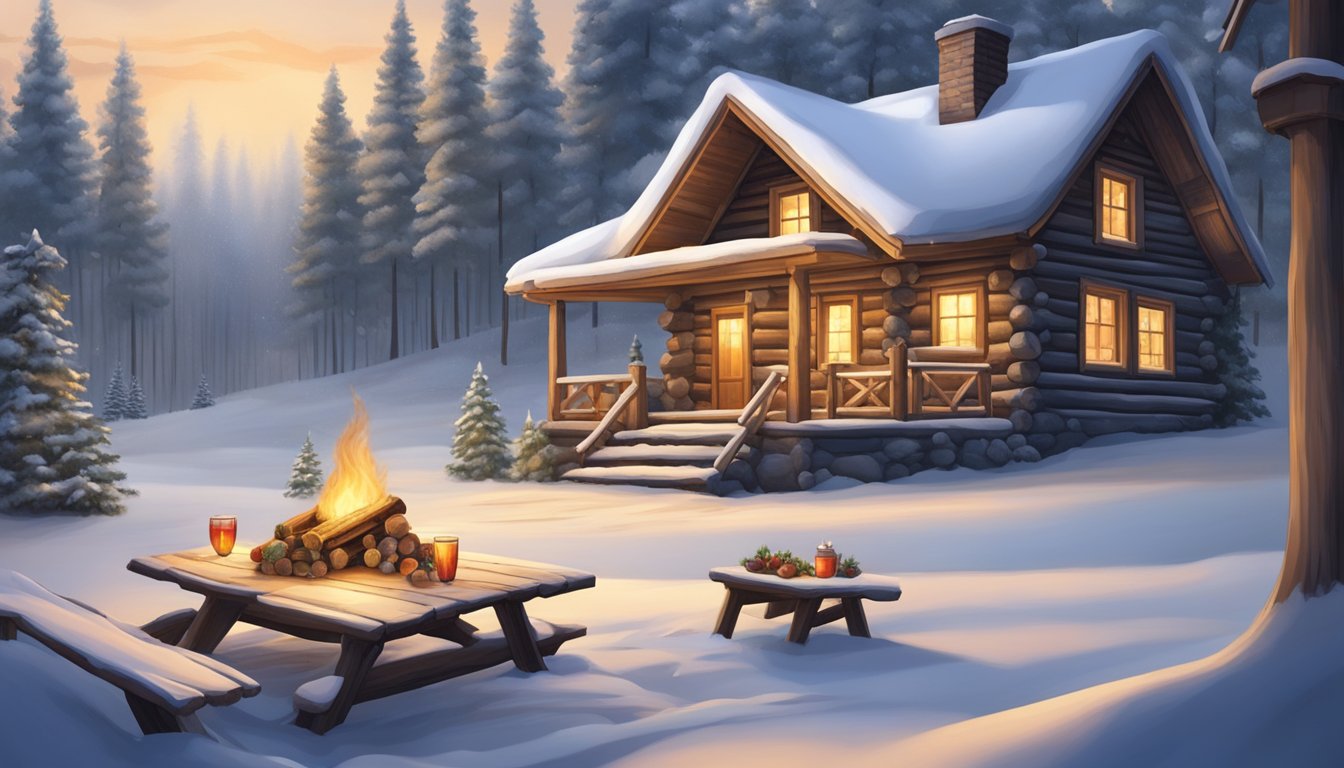
What are the typical traditions associated with celebrating Christmas in Finland?
Finns typically observe Christmas by decorating trees on Christmas Eve, singing carols, and visiting cemeteries to honour deceased loved ones. In many towns, the concept of Christmas peace is announced, symbolizing a period of harmony and rest.
How do Finns typically celebrate Christmas Day and Eve?
Christmas Eve is the focal point of celebration in Finland, where a Christmas sauna holds cultural significance. This is followed by a festive meal. Christmas Day is usually more relaxed, often spent with family, enjoying leftovers, and resting after the Eve’s festivities.
What are some popular destinations in Finland for spending Christmas?
Lapland is the premier destination for a Finnish Christmas. It is known for its winter wonderland ambience and offers opportunities to visit Santa Claus Village and admire the Northern Lights. Finnish towns also host Christmas markets that draw visitors seeking authentic holiday experiences.
Which foods are traditionally eaten during Christmas in Finland?
The Finnish Christmas table has various dishes, including pork roast, fish, casseroles, and salads. Rice pudding is traditionally consumed for breakfast on Christmas Eve, while mulled wine, known as glögi, is a popular drink throughout the season.
Can you explain the significance of the Christmas goat in Finnish celebrations?
In Finnish, the Christmas goat, or ‘Joulupukki’, historically brought gifts to children and demanded respect. Over time, the Christmas goat has evolved into a more Santa-like figure that embodies the spirit of giving during the festive season.
How does the figure of Santa Claus fit into Finnish Christmas celebrations?
Santa Claus, or ‘Joulupukki’, is believed to live on Korvatunturi Mountain in Lapland.
His role is central to Finnish Christmas traditions, where he delivers presents and spreads joy.
Children in Finland eagerly anticipate his visit on Christmas Eve.
